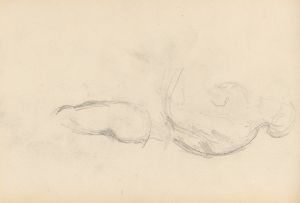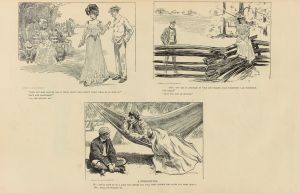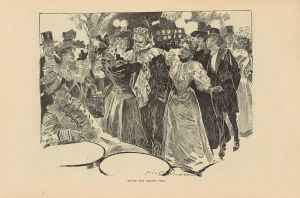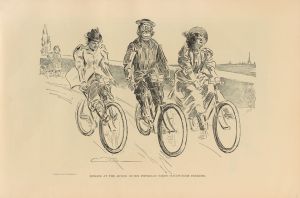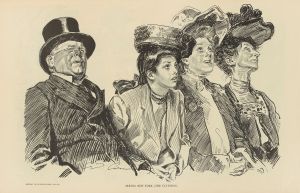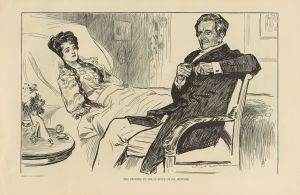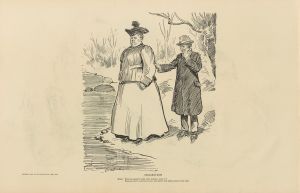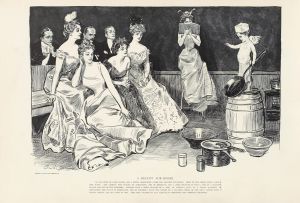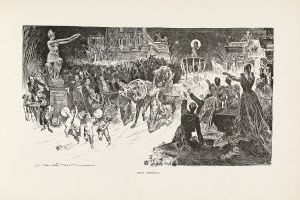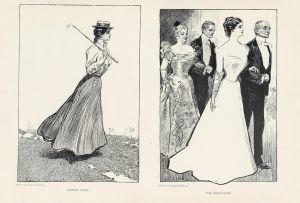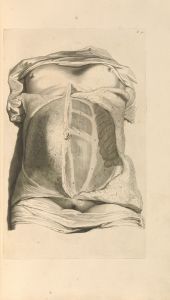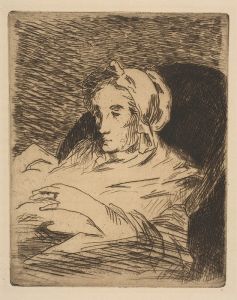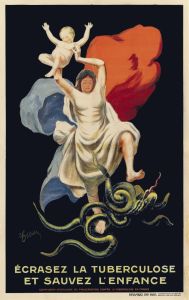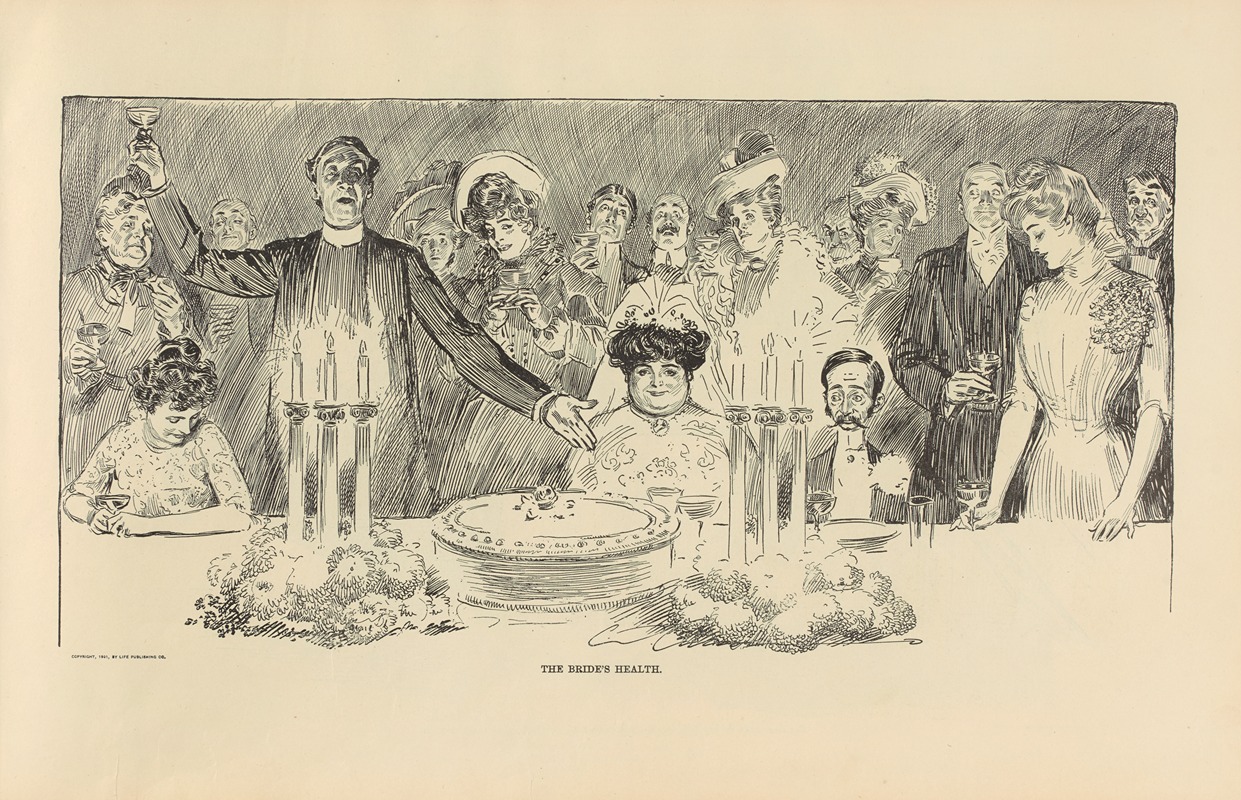
The bride’s health
A hand-painted replica of Charles Dana Gibson’s masterpiece The bride’s health, meticulously crafted by professional artists to capture the true essence of the original. Each piece is created with museum-quality canvas and rare mineral pigments, carefully painted by experienced artists with delicate brushstrokes and rich, layered colors to perfectly recreate the texture of the original artwork. Unlike machine-printed reproductions, this hand-painted version brings the painting to life, infused with the artist’s emotions and skill in every stroke. Whether for personal collection or home decoration, it instantly elevates the artistic atmosphere of any space.
Charles Dana Gibson was an influential American illustrator, best known for his creation of the "Gibson Girl," an iconic representation of the American woman at the turn of the 20th century. Among his many works, "The Bride's Health" stands out as a notable piece, though it is not as widely discussed or documented as some of his other illustrations.
"The Bride's Health" is a black-and-white illustration typical of Gibson's style, which often combined elements of satire, social commentary, and a keen observation of contemporary society. Gibson's illustrations were primarily published in popular magazines of the time, such as Life, Harper's Weekly, and Scribner's, where they reached a broad audience and influenced public perceptions of social norms and ideals.
In "The Bride's Health," Gibson captures a moment that reflects the societal customs and expectations surrounding marriage during the late 19th and early 20th centuries. The illustration likely depicts a social gathering or a toast, a common theme in Gibson's work, which often highlighted the rituals and dynamics of social life among the upper classes. His illustrations frequently explored themes of romance, courtship, and the roles of men and women, often with a humorous or critical edge.
Gibson's work, including "The Bride's Health," is characterized by its detailed line work and expressive characters. He had a talent for capturing the subtleties of expression and posture, which allowed him to convey complex social interactions and emotions with clarity and wit. This skill made his illustrations not only visually appealing but also rich in narrative content, offering viewers a glimpse into the societal norms and values of his time.
While specific details about "The Bride's Health" are limited, it can be understood within the broader context of Gibson's oeuvre. His illustrations were more than mere depictions; they were commentaries on the changing roles of women, the nature of relationships, and the social structures of the day. The "Gibson Girl," for example, was both an idealized and a satirical figure, representing both the aspirations and the constraints faced by women in the early 20th century.
Gibson's influence extended beyond his illustrations. The "Gibson Girl" became a cultural phenomenon, influencing fashion, literature, and even the feminist movement. His work remains a valuable resource for understanding the cultural history of the United States during a period of significant social change.
In summary, while "The Bride's Health" may not be as extensively documented as some of Gibson's other works, it is a part of his larger body of work that offers insight into the social customs and gender dynamics of his time. Charles Dana Gibson's legacy as an illustrator lies in his ability to capture and critique the world around him with both artistry and insight.





